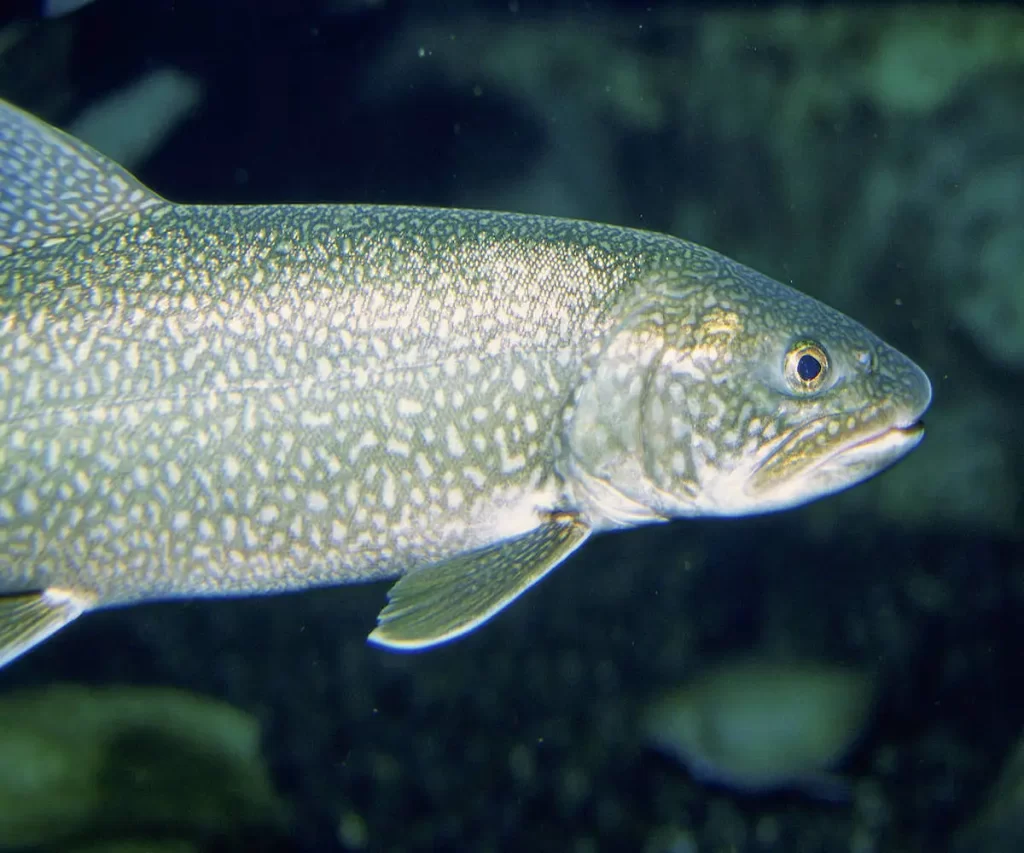
Lake Trout Fish Species Guide
Welcome to our in-depth exploration of the fascinating world of Lake Trout (Salvelinus namaycush), a species that holds a special place in the hearts of anglers and nature enthusiasts alike. In this comprehensive guide, we’ll delve into the biology, habitat, behavior, fishing techniques, and conservation efforts related to Lake Trout.
Taxonomy and Distribution
Taxonomy
Lake Trout belongs to the Salmonidae family and is scientifically known as Salvelinus namaycush. It is closely related to other char species like the Brook Trout (Salvelinus fontinalis) and the Arctic Char (Salvelinus alpinus).
Distribution
Native to North America, Lake Trout are primarily found in cold, clear lakes across the northern parts of the continent. They have a broad distribution range, inhabiting lakes in Canada, the United States, and Alaska. Lake Trout have also been introduced to other regions, such as Europe and Asia, for recreational fishing.
Physical Characteristics
Lake Trout exhibit several distinctive physical features that make them easily recognizable:
Size
One of the most remarkable aspects of Lake Trout is their impressive size. They are known for growing exceptionally large, with some individuals reaching lengths of over three feet and weighing more than 40 pounds. This makes them a popular target for anglers seeking a trophy catch.
Coloration
Lake Trout display a range of colors depending on their environment. In general, they have a greenish to grayish back, a light-colored belly, and light spots on their sides. The coloration is adaptive, providing camouflage in their habitat.
Fin Characteristics
Notable features include a deeply forked tail, an adipose fin (a small, fleshy fin located between the dorsal and tail fins), and light-colored leading edges on their pelvic, pectoral, and anal fins.
Habitat and Behavior
Understanding the habitat and behavior of Lake Trout is crucial for successful fishing and conservation efforts:
Habitat
Lake Trout thrive in cold, oxygen-rich waters, typically occupying the deeper regions of large, clear lakes. They prefer temperatures between 50 and 55 degrees Fahrenheit and are often found near underwater structures like rocky outcrops, drop-offs, and submerged islands.
Feeding Behavior
Lake Trout are carnivorous predators, and their diet includes various aquatic organisms such as smaller fish, crustaceans, and insects. They are known for their opportunistic feeding behavior, often ambushing prey from below.
Spawning
Lake Trout typically spawn in the fall. They seek out gravel or rocky substrates in shallow areas to deposit their eggs. Spawning behavior is a critical aspect of their life cycle, and understanding these patterns is essential for conservation efforts.
Fishing Techniques
For many anglers, the pursuit of Lake Trout is a thrilling adventure. Here are some effective fishing techniques:
Trolling
Trolling is a popular method for targeting Lake Trout, especially in larger bodies of water. Anglers use downriggers to present lures or baits at various depths, mimicking the movement of prey fish.
Jigging
Jigging involves vertically presenting lures or bait to Lake Trout beneath the boat. This technique is effective in deeper waters and can be particularly successful during the colder months.
Casting
Casting with spoons, spinners, or crankbaits is a versatile method for targeting Lake Trout near the shore or in shallower areas. It allows for covering a large area and enticing strikes from aggressive fish.
Conservation
As with many fish species, Lake Trout face various threats, including habitat degradation, overfishing, and the introduction of non-native species. Conservation efforts are crucial to ensure the long-term health of Lake Trout populations:
Habitat Protection
Preserving the pristine habitats that Lake Trout rely on is paramount. This includes safeguarding water quality, preventing shoreline development, and implementing measures to maintain suitable spawning areas.
Fishing Regulations
Effective fisheries management involves implementing and enforcing fishing regulations to prevent overharvesting. This includes size limits, catch-and-release practices, and seasonal closures during spawning periods.
Stocking Programs
In some cases, stocking programs are employed to supplement natural populations. Careful consideration is required to ensure that stocking does not disrupt the genetic diversity or ecological balance of the existing population.
Challenges and Conservation Success Stories
While Lake Trout face challenges, there have been notable success stories in their conservation. Understanding both the obstacles and achievements provides insight into the ongoing efforts to protect this iconic species.
Challenges
- Climate Change: The warming of lakes due to climate change poses a threat to cold-water species like Lake Trout, affecting their distribution and behavior.
- Invasive Species: The introduction of non-native species, such as predatory fish or parasites, can have detrimental effects on Lake Trout populations.
Success Stories
- Habitat Restoration: Initiatives focusing on habitat restoration have successfully improved the conditions for Lake Trout in certain regions, leading to increased populations.
- Community Involvement: Collaborative efforts involving local communities, anglers, and conservation organizations have played a crucial role in protecting Lake Trout habitats and advocating for sustainable fishing practices.
Conclusion to: Lake Trout
In conclusion, the Lake Trout is a remarkable species that captivates the imagination of anglers and nature enthusiasts alike. Understanding its biology, habitat, behavior, and the challenges it faces is essential for both successful fishing and effective conservation. By appreciating and actively participating in efforts to protect Lake Trout populations, we can contribute to the preservation of this iconic species for future generations. Whether you’re an angler seeking the thrill of a trophy catch or a conservationist passionate about preserving biodiversity, the Lake Trout offers a rich and rewarding subject for exploration.